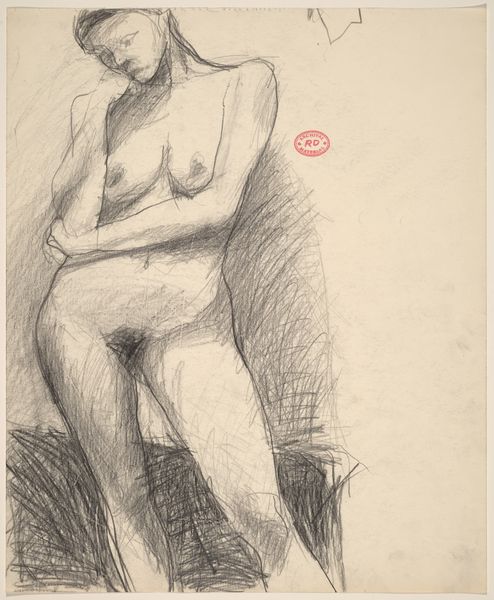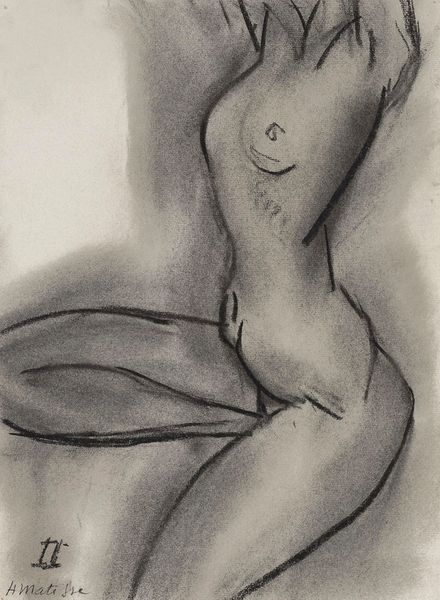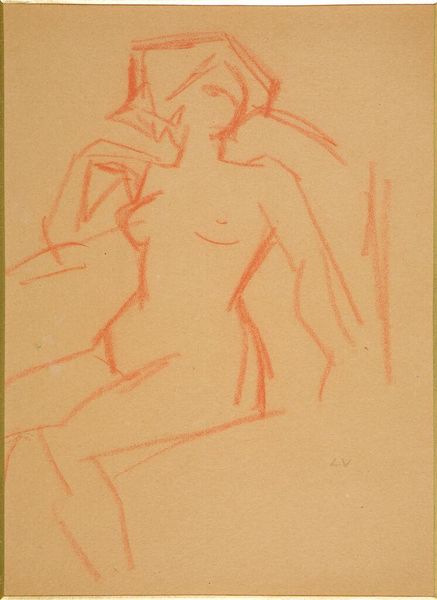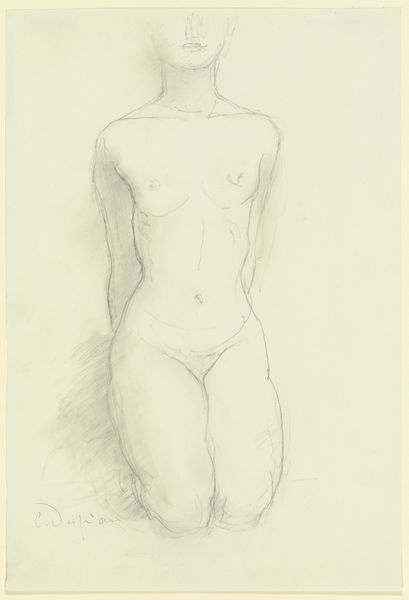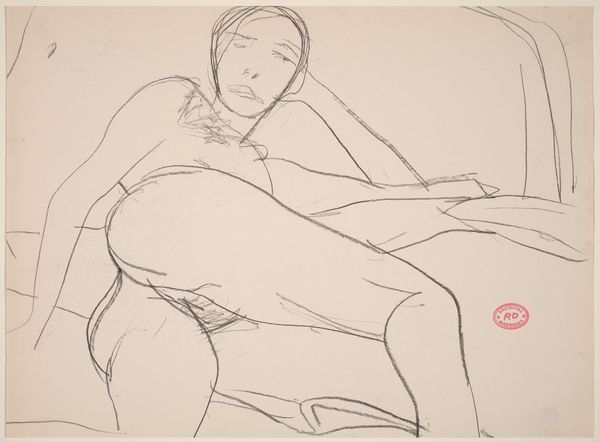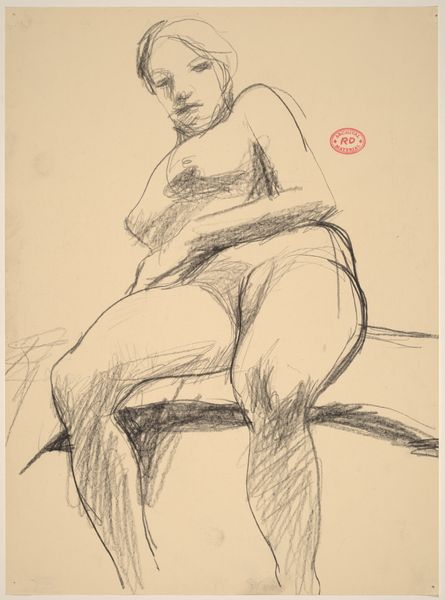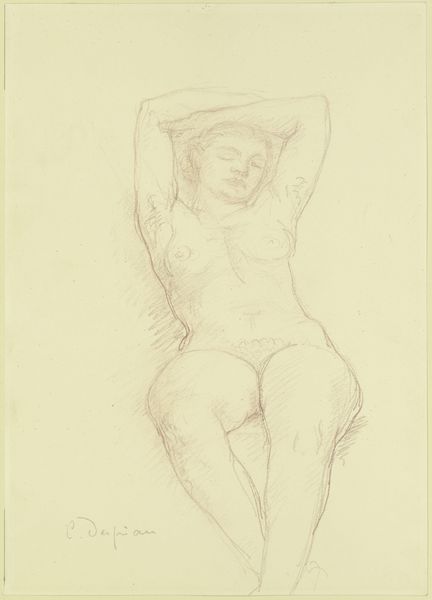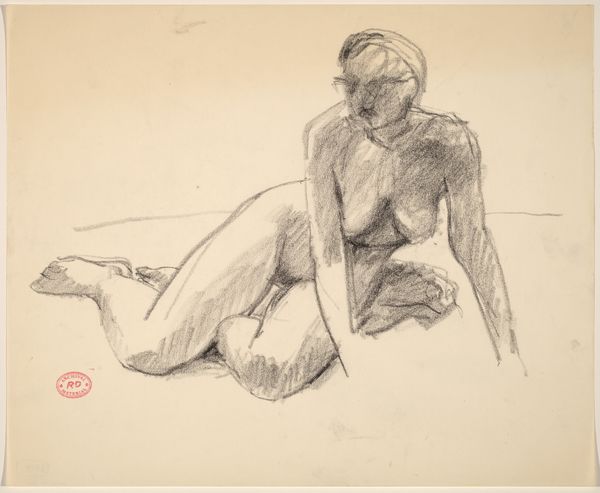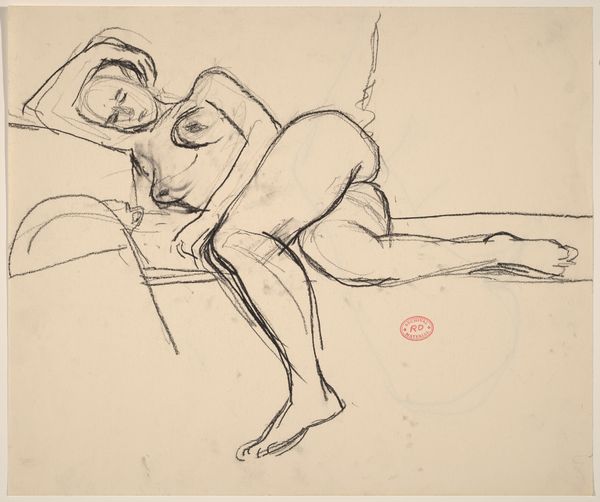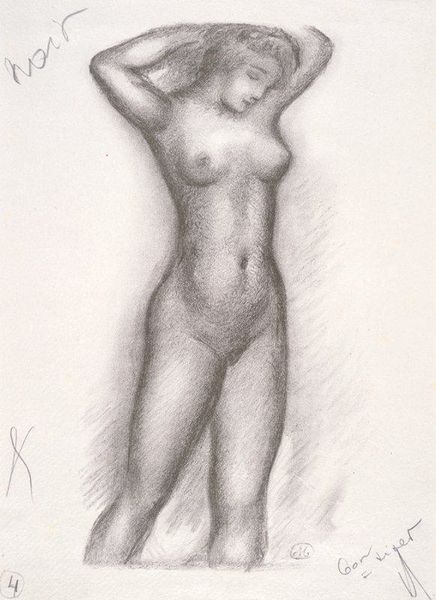
drawing, pencil
#
portrait
#
drawing
#
pencil drawing
#
pencil
#
expressionism
#
portrait drawing
#
nude
Dimensions: 386 mm (height) x 294 mm (width) (bladmaal)
Editor: This is "Liggende kvindelige model," or "Reclining Female Model," a pencil drawing by Harald Giersing, created between 1912 and 1913. I'm struck by how unfinished it feels, almost like a fleeting impression. What do you make of the starkness and lack of detail? Curator: It's precisely that sense of incompleteness that draws me in. Look at the facelessness – what does it signify? Often, portraiture aims to capture an individual likeness, but here, the absence speaks volumes. The anonymity almost universalizes her, don't you think? Editor: I see what you mean. By removing the face, is Giersing trying to tap into a more universal representation of womanhood? Curator: Possibly. Consider the period – early 20th century, expressionism was in full swing. Artists were less concerned with literal representation and more with conveying inner emotional states and primal feelings. The nude form, a traditional subject, becomes a vehicle for exploring something deeper, perhaps anxieties or desires simmering beneath the surface of societal norms. The stark pencil strokes contribute to that rawness. Does it evoke anything specific for you? Editor: I feel a vulnerability, maybe even a sense of isolation, even though the pose is quite relaxed. It's interesting how much emotion can be conveyed with so little. Curator: Exactly. Giersing’s choice not to elaborate pushes us to project our own emotions and cultural understandings onto the figure. This is how an image persists in memory, continuously shaped and reshaped by successive audiences and their specific backgrounds. What are your final thoughts on this portrait drawing? Editor: I've gained a fresh appreciation for how absence and incompleteness can be incredibly powerful tools for conveying meaning. Curator: Indeed. It invites us to actively participate in the artwork's story. This drawing leaves you thinking about identity, cultural expectations, and the artist's inner world.
Comments
No comments
Be the first to comment and join the conversation on the ultimate creative platform.
